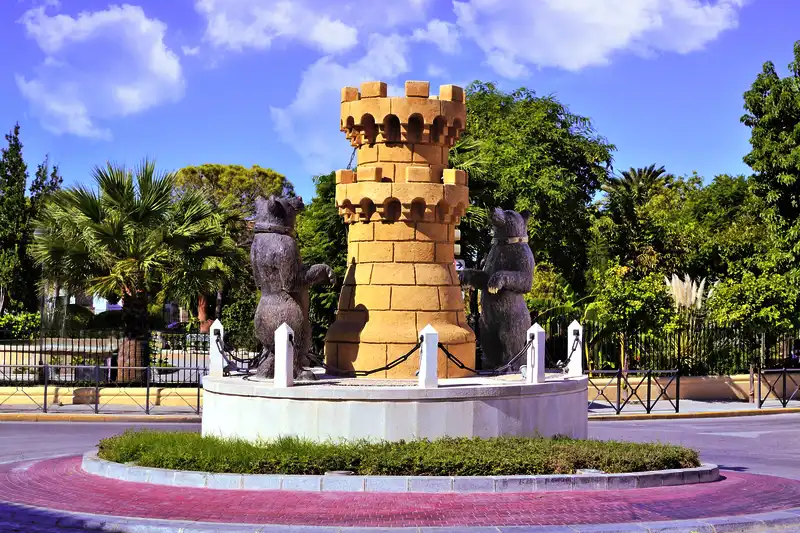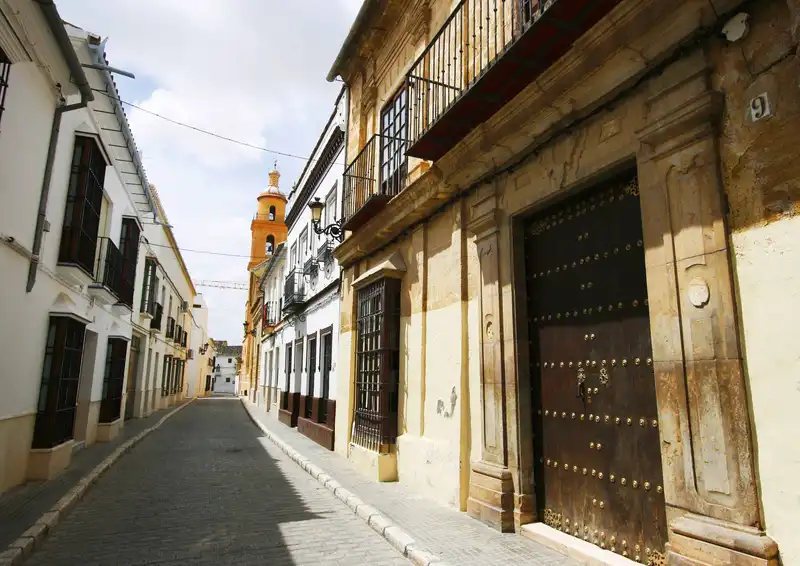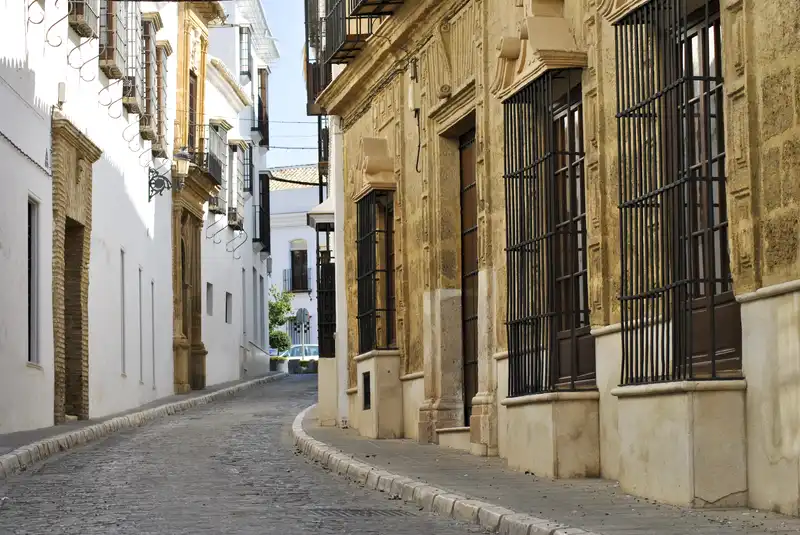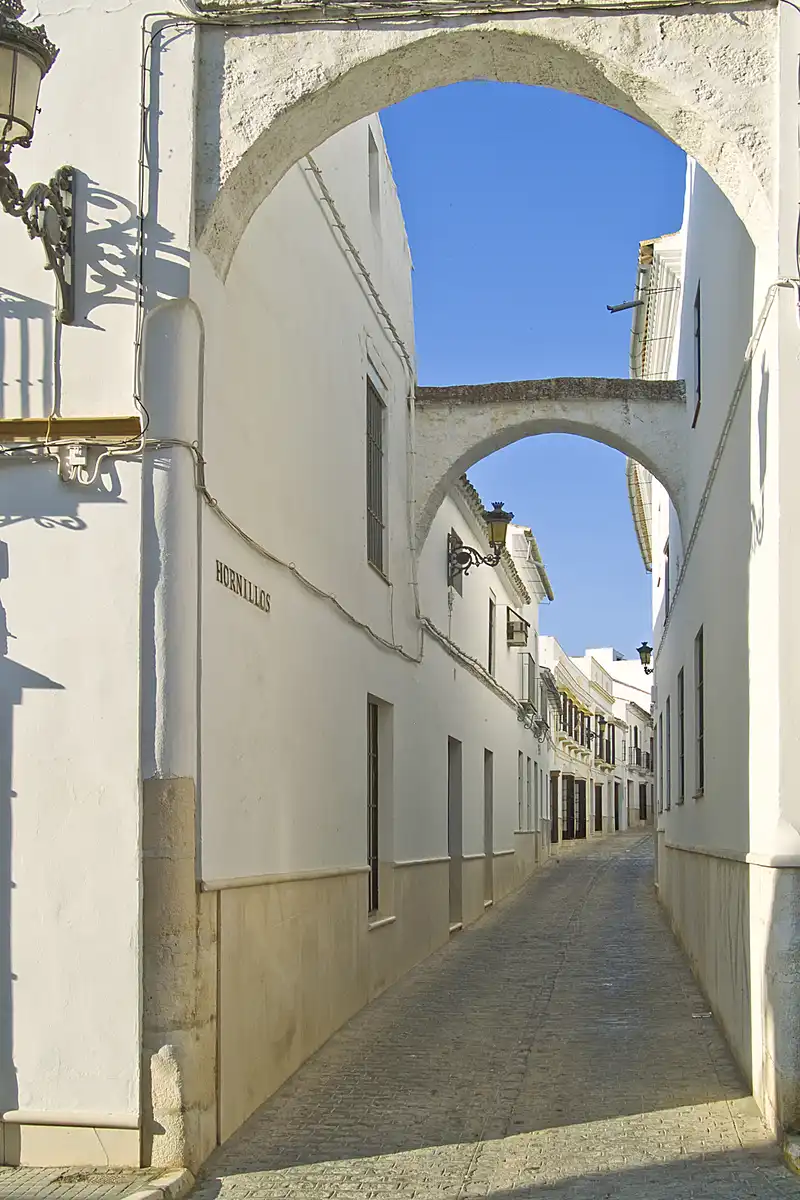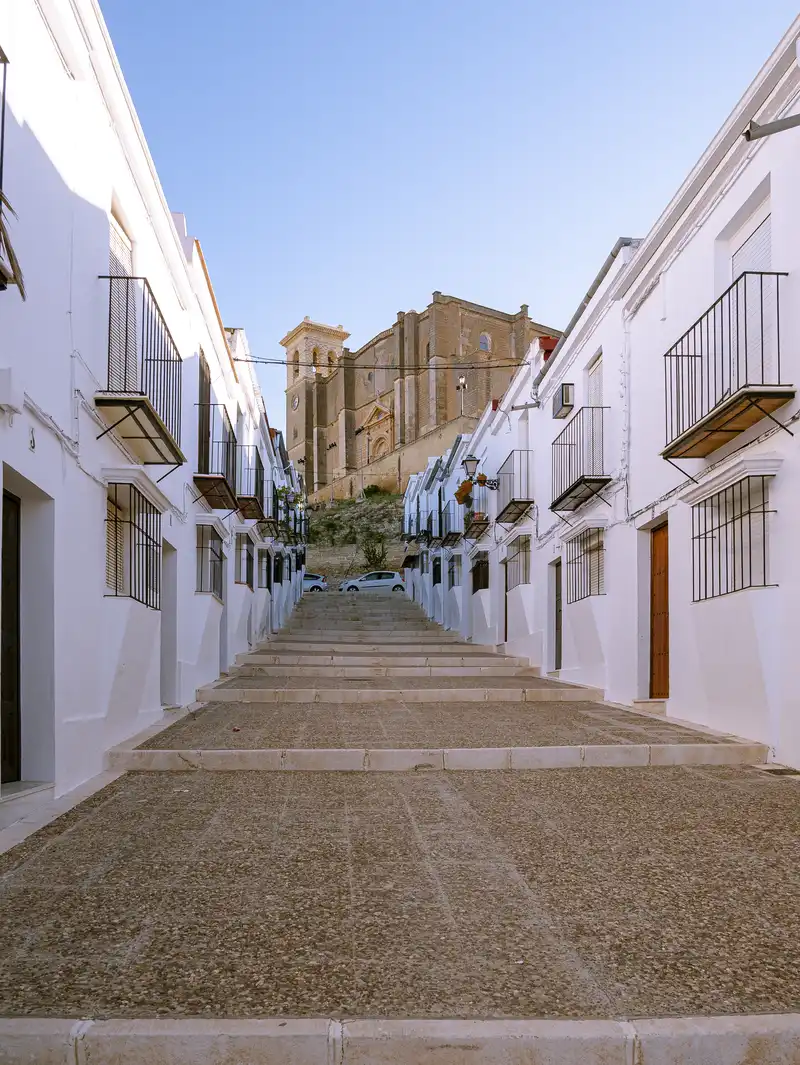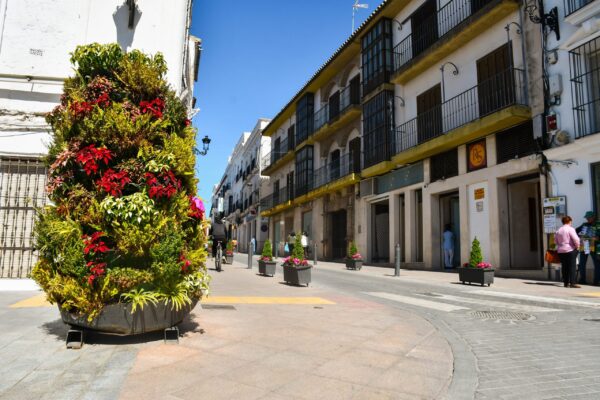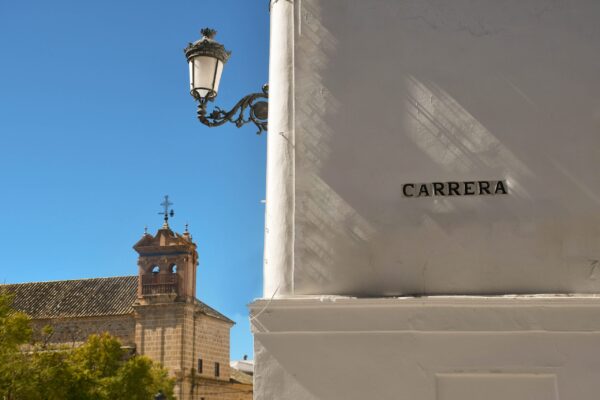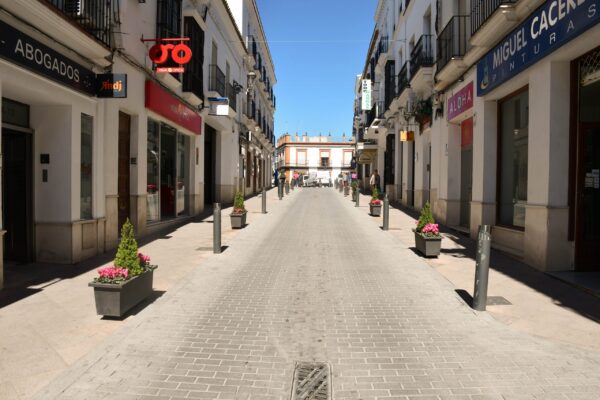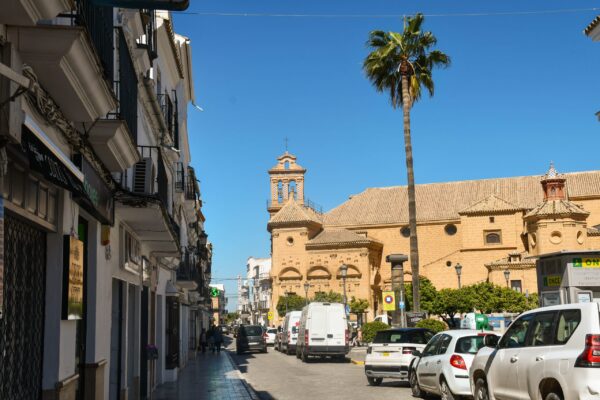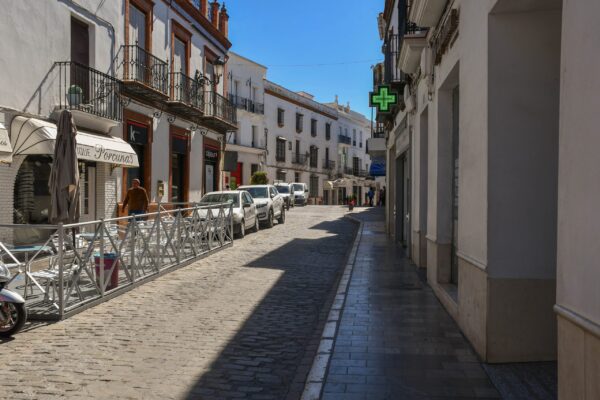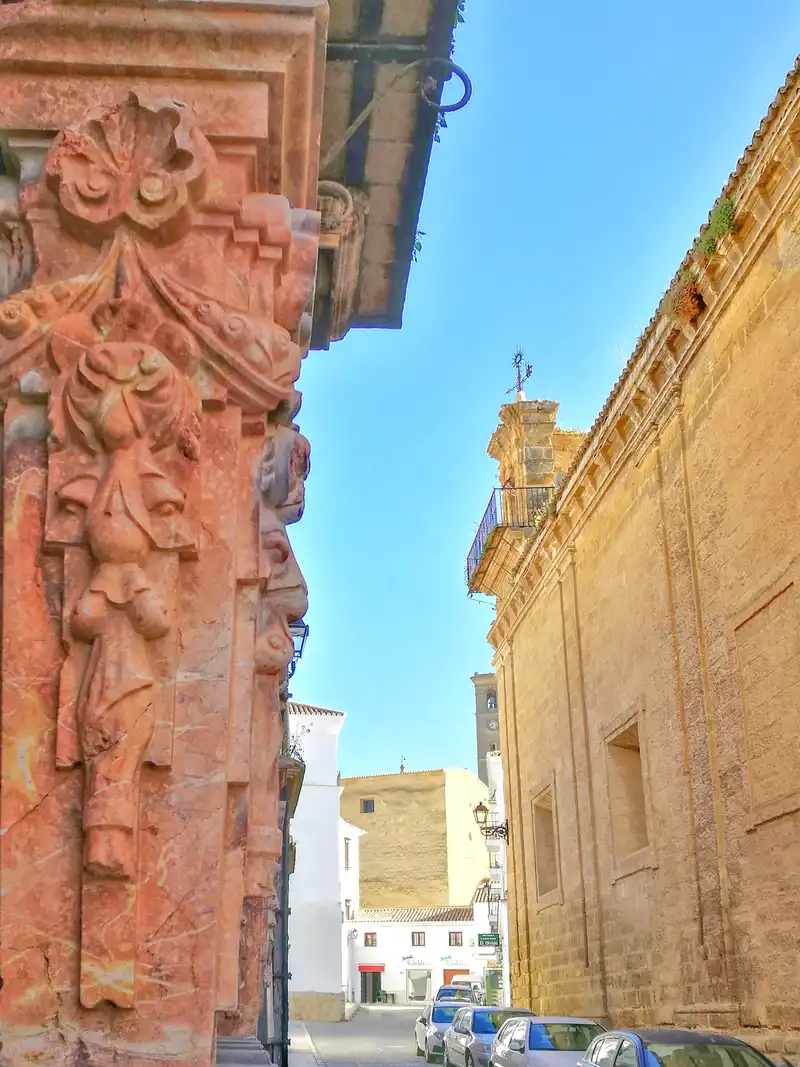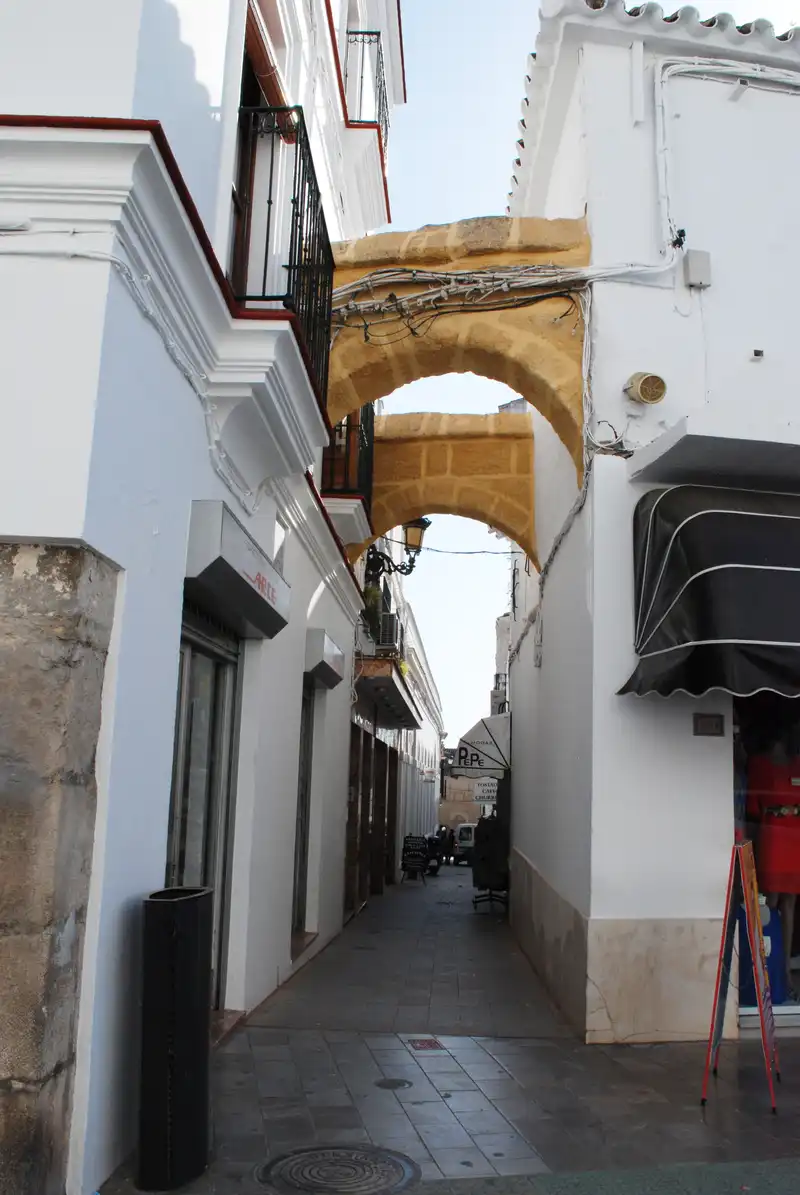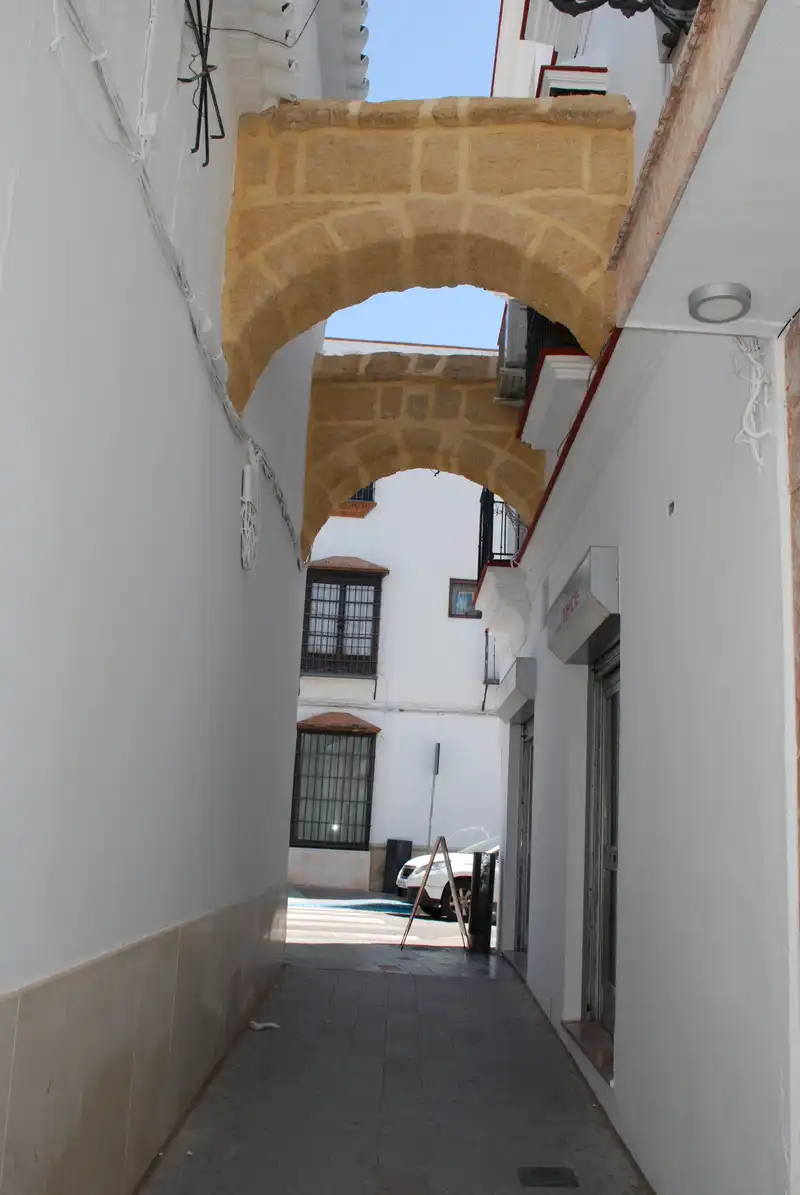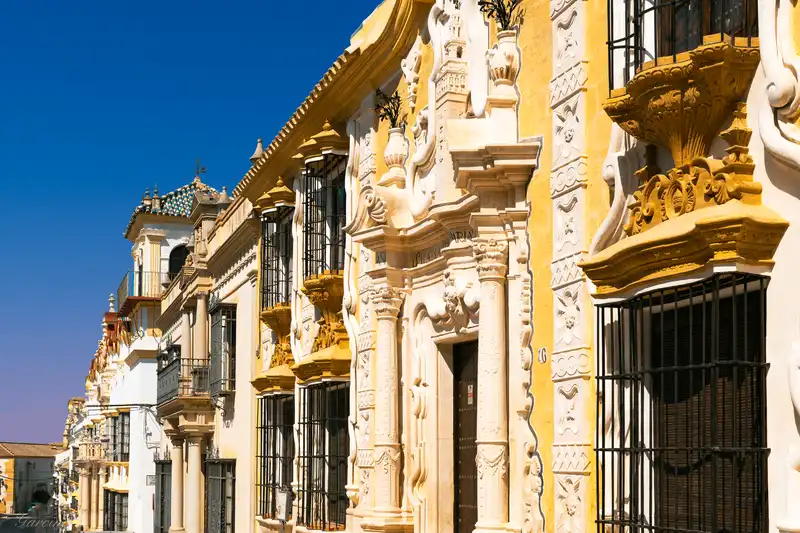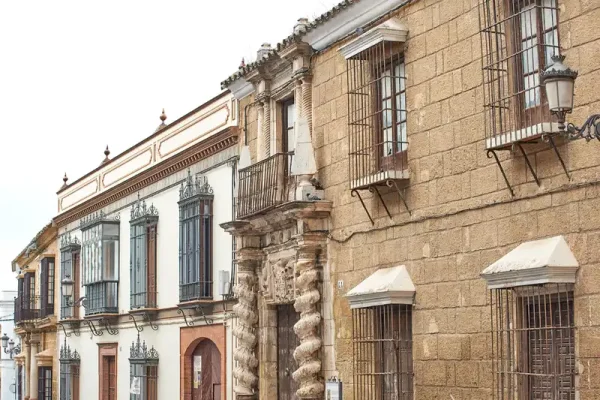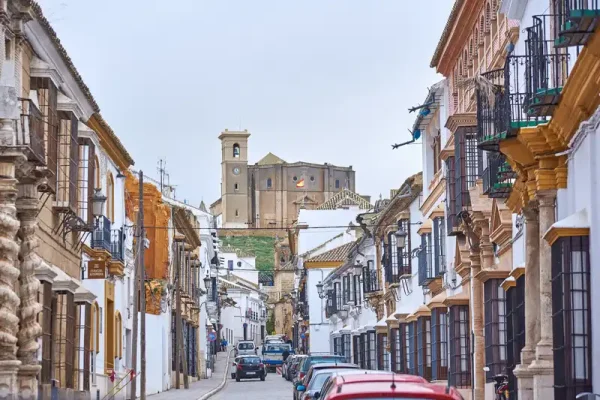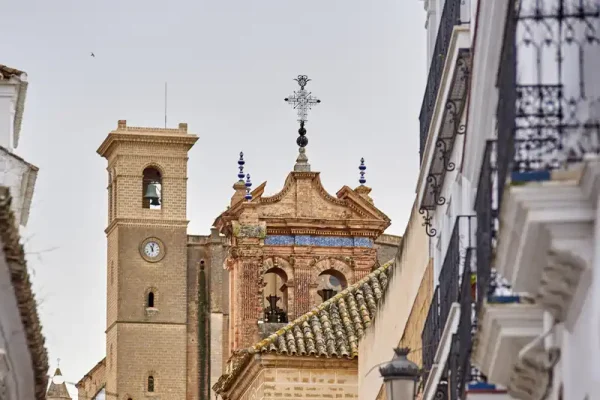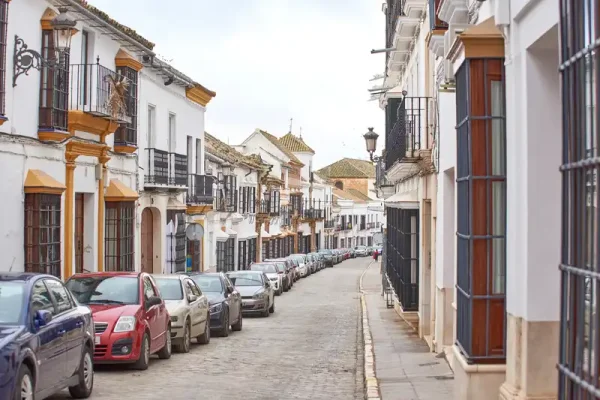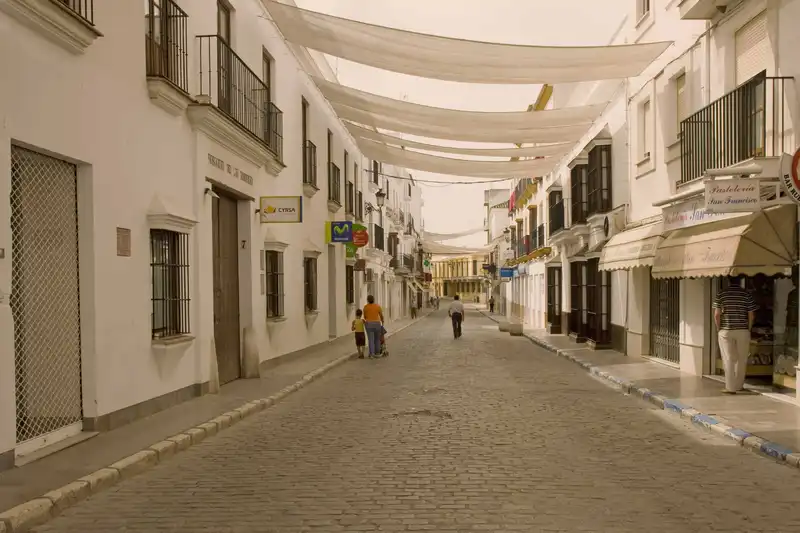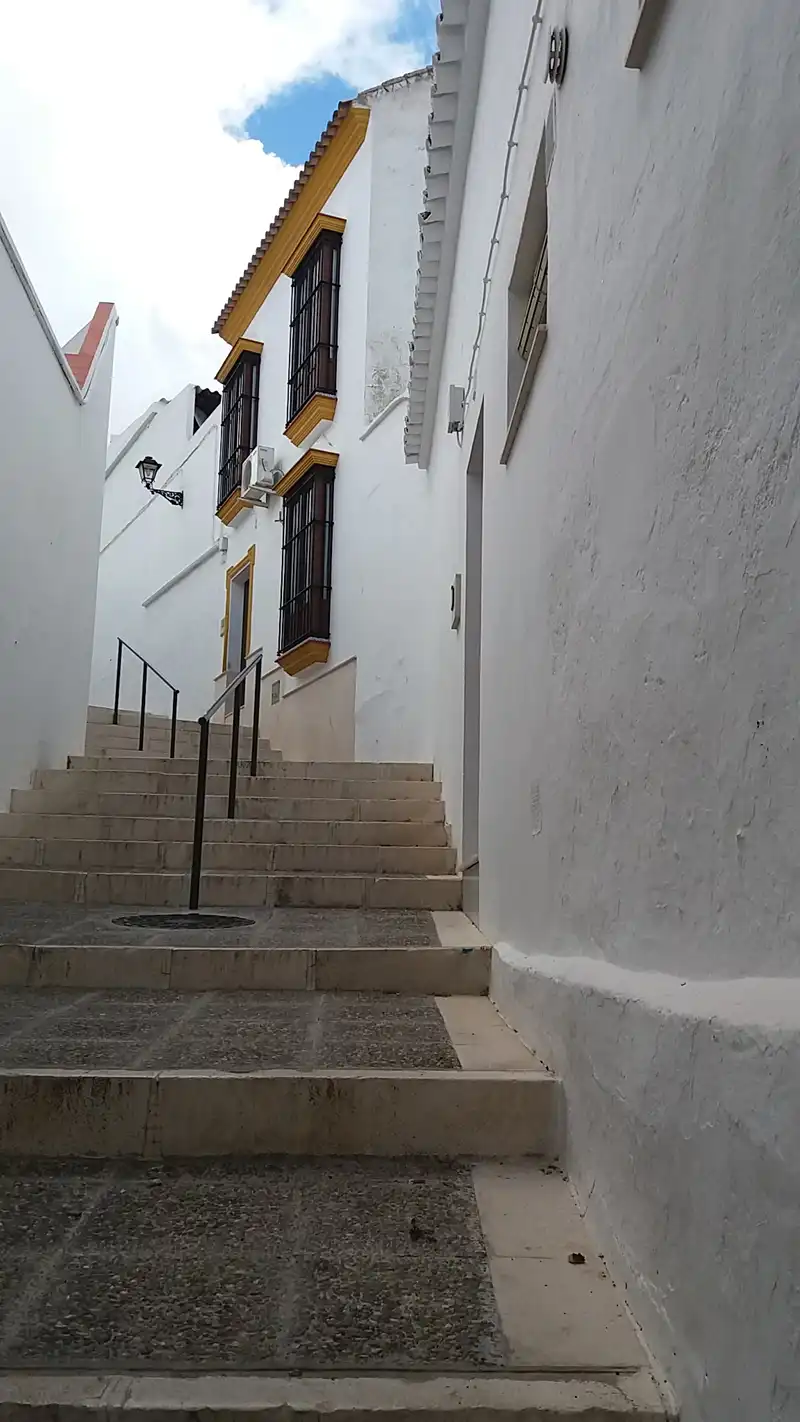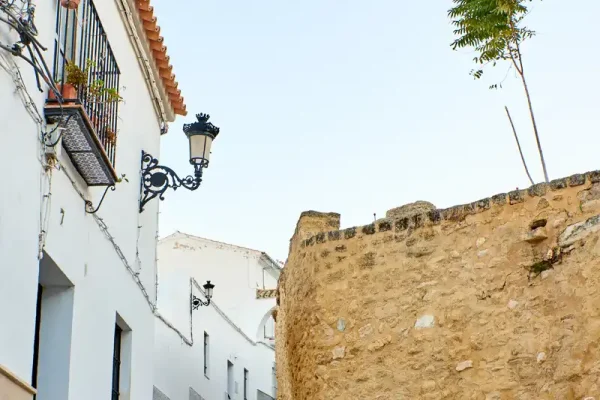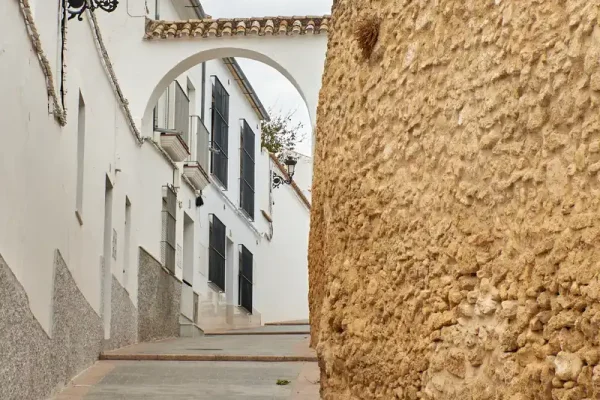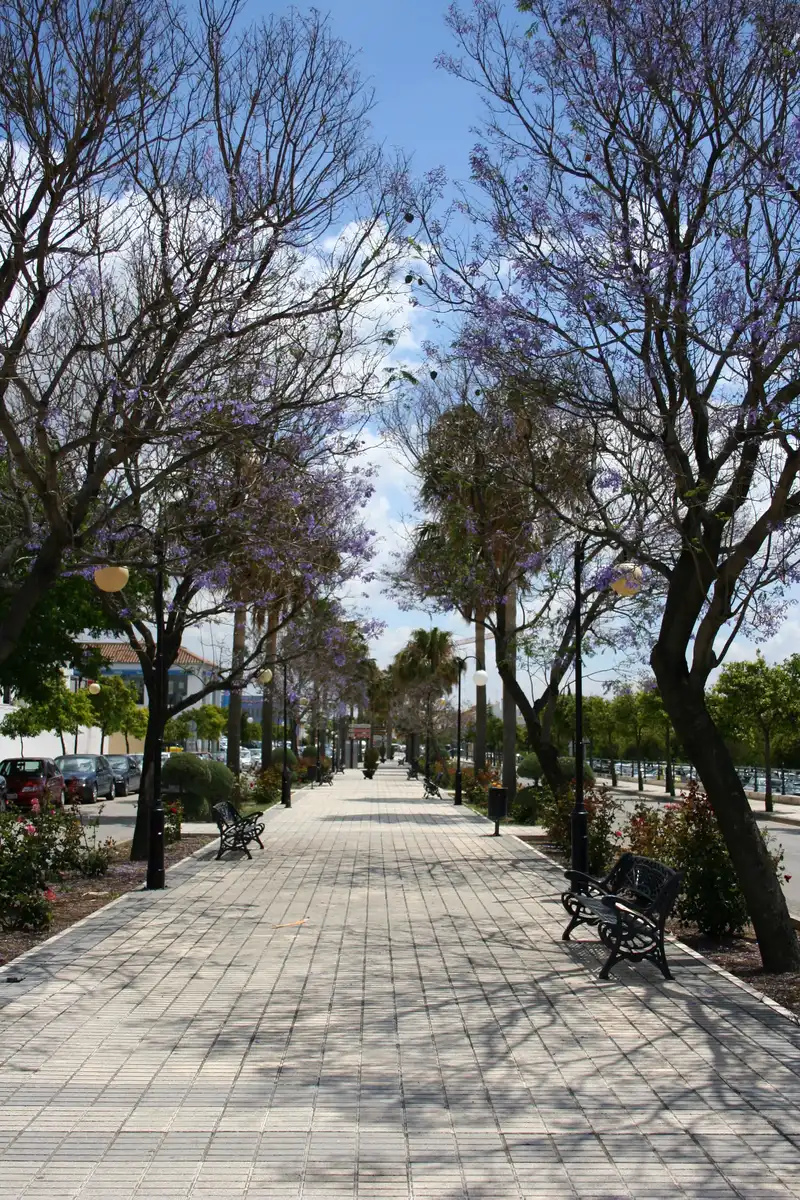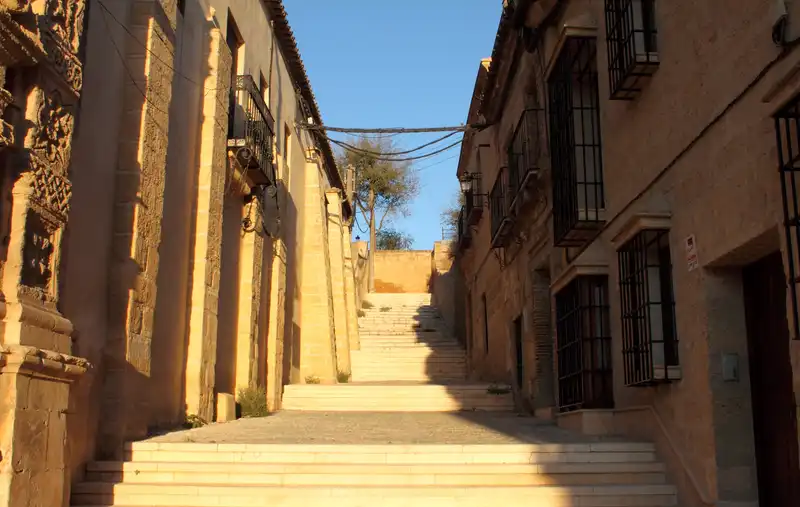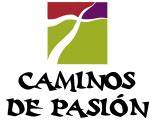


- ALFONSO XII STREET
- COMPAÑÍA STREET
- CRISTO STREET
- GORDILLO STREET
- HORNILLOS STREET
- JARETILLA STREET
- CARRERA STREET
- LA HUERTA STREET
- SAINT FRANCISCO STREET
- SAN PEDRO STREET
- SEVILLA STREET
- ASISTENTE ARJONA STREET
- TESORO ALLEY
- SAN ANTÓN SLOPE
- CONSTITUCIÓN AVENUE
- MARRUECOS SLOPE
ALFONSO XII STREET
This is one of the streets with more tourist and local movement due to the large number of bars, restaurants and entertainment establishments. Furthermore, walking by this street you can find the biggest green area of Osuna, the park Saint Arcadio, where people of all ages come to enjoy with their family, as well as different species of flora that can be contemplated.
COMPAÑÍA STREET
The convent of la Compañía de los Padres Jesuitas was located in this street and that is the reason why it receives that name. Visitors can contemplate the majestic tower of Saint Carlos el Real which was built with the typical stone of Osuna called “ashlar” extracted from the former quarries of the town.
CRISTO STREET
This street is located in the very heart of the town joining the two most important and monumental streets of Osuna, which are San Pedro and Sevilla street. From one end of the Cristo Street visitors can contemplate both the impressive Church Convent of San Pedro, where the Carmelites nuns carry out their activities such as handmade pastries, and Juan XXIII square. At the other end of the street tourists can visit the Church Convent of Nuestra Señora del Carmen.
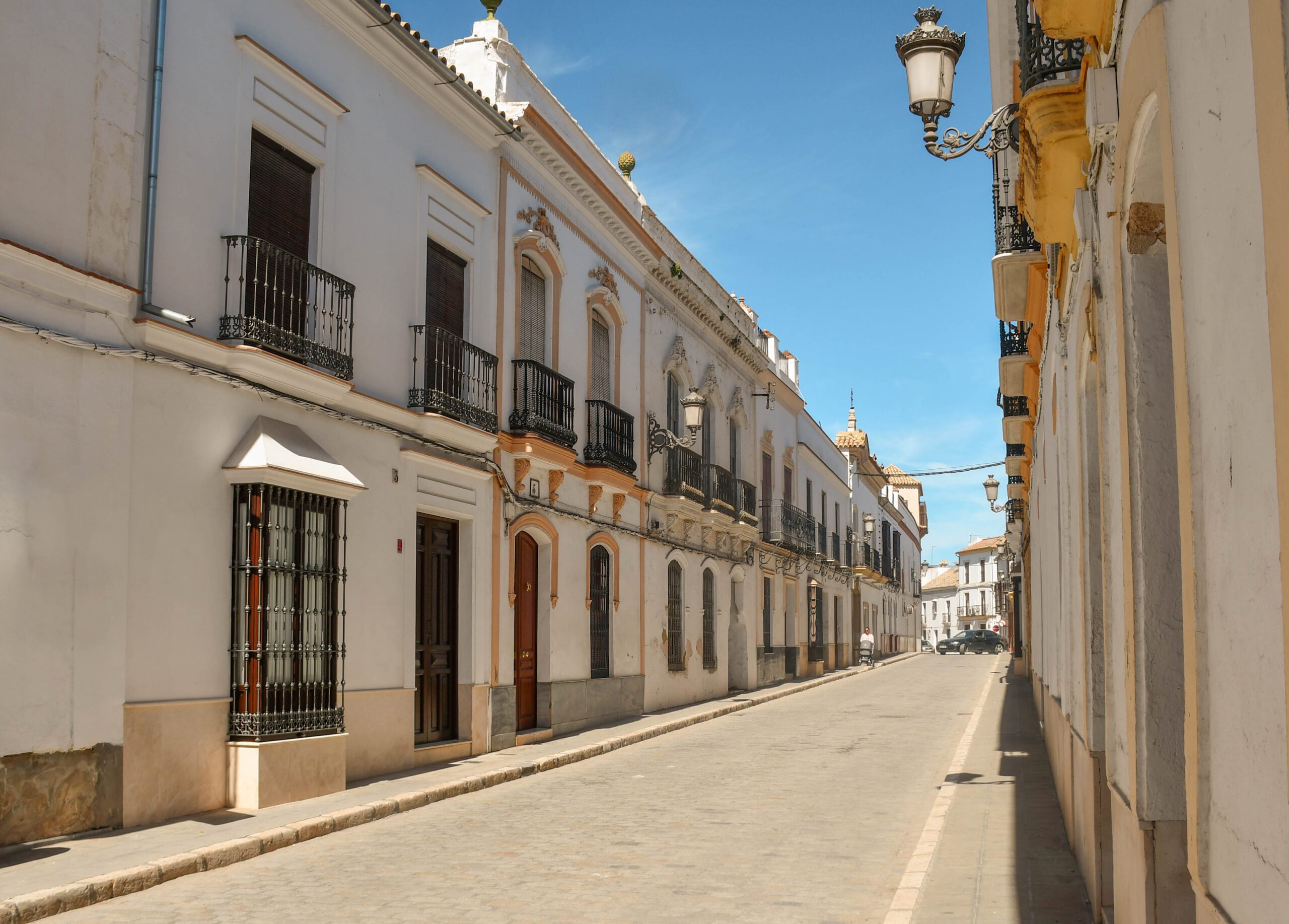
GORDILLO STREET
Its former name was Evandro Street which was replaced by Gordillo in honour to the Gordillo Abbot.
This is a narrow street located between San Pedro and Sevilla Street. Its architecture has nothing to envy other streets but often goes unnoticed by tourists due to its situation and size.
Walking through this street tourists can contemplate many houses of deserved tribute.
HORNILLOS STREET
It is a narrow and quiet street that end in Sevilla Street. Tourists can appreciate the joyful silence and listening to people´s footsteps and conversations.
The arches of the ancient architecture are preserved.
JARETILLA STREET
The majestic narrow street called Jaretilla is a quite steep street decorated with flowerpots and flowers.
From the bottom of this street tourists can appreciate the impressive Colegiata and the profane architecture of this beautiful town.
CARRERA STREET
It is the most commercial street of the town, its mercantile origin dates back to the 16th century that was the Golden Age of Osuna.
Being the heart of the city, this street has been the economic and social axis where the expansion phases were developed forming the physiognomy of Osuna. We can locate the beginning of the street from the foot of the former “Puerta de Écija”, currently known as “Arco de la Pastora”, to the formerly known Puerta de Teba where the Town Council is located.
Carrera Street is the origin and end of the other important streets in the town; walking through this street we can appreciate some buildings with immeasurable heritage value and many shops and entertainment establishments.
LA HUERTA STREET
In order to get to La Huerta street tourists need to pass through the arch of the Town Council and turn right.
The entire street belonged to the Ducal House. It is important to highlight the convent of Santa Clara and the Cepeda Palace, from the 18th century, which shows one of the best baroque facades in the town, placed in 10 La Huerta st.
At the end of the street, in the same side, the palace that was occupied by the Dukes of Osuna when they left the castle-fortress in the 18th century was built.
The street finishes in the Duque square which was built at the end of the 16th century over the land surrendered by the Ducal House and used for celebration of shows.
SAINT FRANCISCO STREET
This is a pedestrian street flanked by a pointed archway, located in the commercial town centre giving access to the local market, which was the ancient convent of Saint Francisco from which the cloister is the only currently preserved part, and where the different market stalls are placed.
SAN PEDRO STREET
San Pedro Street is considered itself a monument of stone and art. It is a wide street with slope in which the palaces and manor houses are aligned and almost all the architectural evolution styles can be admired along it.
Furthermore, this street has been chosen as a setting for films such as María Callas film by the Italian director Franco Zeffirelli.
We can highlight the Palacio Marqués de la Gomera, la Cilla del Cabildo Colegial (former barn), houses number 2, 21 and 27 with impressive facades.
SEVILLA STREET
This street is parallel to San Pedro Street and it also has a slope. At an end of the street we have a unique view of the Colegiata and at the other end of the street, you can appreciate the tower of the Espíritu Santo Church.
This street is a museum itself. Visitors could start the visit by the church of Concepción, next to the main square, showing a facade built with ashlars which is the typical stone of this town. Down the road, the red facade of Santa Catalina shows the image of the Saint holding the wheel of the martyrdom. On both sides of the street we can contemplate magnificent facades of manor houses and the artistic baroque facade of the former Courts, with superb Solomonic columns. Among these historical buildings with great value, the House of Culture and the Museum of Osuna can be found as well.
A walk through this impressive street will remain in your memory for quite some time.
CASISTENTE ARJONA STREET
It is one of the busiest streets in the town. This street has many establishments and shops which allow it to show great vitality. Walking by the street you can find the former “Posada de la Gomera” and at one of its ends, passing under some arches, it is possible to access the Town Council and the Main Square.
TESORO ALLEY
This alley called Tesoro is located in the heart of the town giving access to the picturesque neighbourhood of La Rehoya. The visitor can walk upstairs towards one of the most singular squares of the town: Asunción square, at the foot of the Colegiata of Osuna.
In this street we can see remains of the old urban wall of Osuna from the Almohade period (13th century). This stage marked the starting point towards the Teba path and it was located between the Tower of Water and the former Puerta de Granada.
SAN ANTÓN SLOPE
This street is one of the most representative ones of the vernacular Andalusian architecture. The visitor can walk up this charming steep hill. At Easter time some processions (Nuestro Padre Jesús Nazareno and Ntra. Sra. De los Dolores) pass through this alley during the Good Friday becoming one of the most representative alleys of the town. At one end of the slope we can access the singular square of La Encarnación and at the other one, there is access to the Tower of Water, from Almohade period.
CONSTITUCIÓN AVENUE
When you arrive in Osuna from Málaga, Granada or Almería by the highway A-92, the first avenue that you can find is the so-called Avenida de la Constitución. It is a wide and commercial avenue due to the large number of shops and service providers, as well as different infrastructures and equipments such as the Hospital, the University, the students residence, the bus station, ITV (Vehicle Inspection Test), recycling facility and public buildings such as the Youth Centre.
MARRUECOS SLOPE
This is another of the magnificent streets with a slope in Osuna, located at the foot of the baroque tower of La Merced. Walking up the steep slope, visitors can appreciate the different buildings built with the yellowish sandstone called ashlars extracted from the former quarries of Osuna, reaching the Buena Vista path from which the tourist can enjoy a spectacular panoramic view of the town.

